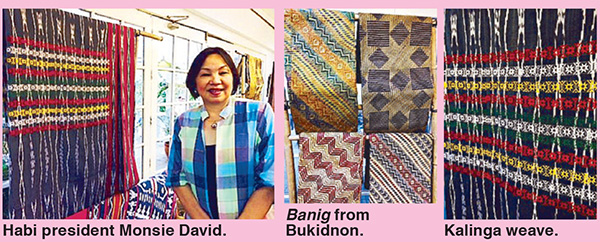A marketplace of weaving traditions
MANILA, Philippines - The Philippines is a country rich in culture and traditions. Starting today until Sunday, Oct. 26, the centuries-old tradition of textile weaving will be highlighted at the fourth Likhang Habi Bazaar at the Glorietta Activity Center in Makati City. It is sponsored by Habi, the Philippine Textile Council, founded in 2009 to research, develop and promote handmade Philippine textile.
After visiting weaving communities in rural areas and marginalized communities all over the country, Habi got to know the problems that beset the struggling weaving industry: lack of materials; the need for contemporary designs along with the traditional; marketability; and the loss of interest in weaving among the younger members of the community.
The Likhang Habi Bazaar was designed as a first step to bring together weavers, suppliers, designers, market experts as well as the buying public. Here, they gain the insight on what material attracts and sells, and how to present it. The exposure to fellow weavers and the buying public has visibly raised the quality of the products on offer each year.
Local weaving communities have used pineapple, abaca, cotton, silk, banana, buri and pandan to produce their own particular weaves. Featured weaves include inabel from the Ilocos region and La Union, Cordillera weaves from Banaue and Padcal in Benguet, t’nalak (an abaca weave) from Lake Sebu in Mindanao, piña from Aklan and Palawan, hablon and patadyong from Iloilo, Mangyan textiles and baskets from Mindoro, Yakan weave from Basilan and mats from Samar and Bukidnon.
The weaves are rendered into home accessories such as blankets, tablecloths, bed covers, lampshades, runners, place mats, napkins, baskets and mats. Check out the contemporary and innovative interpretations of clothing from designers such as Len Cabili, La Herminia in Aklan, and the Lim sisters as well as barong Tagalog material and ready-to-wear barongs in different textiles like hablon, t’nalak, abaca, piña-silk, piña-cotton. Accessories such as shoes made of t’nalak cloth, beaded and woven clutches, scarves and wraps will also be available.
The bazaar’s theme this year is “Gawang Kamay, Banig ng Buhay,” which will highlight the craft of mat-making as a textile art. As Habi is a member of the Asean traditional textile community, the bazaar always features the products of an Asean member country, which will be Myanmar this year. I remember getting beautiful fabric from Myanmar when I visited years ago, so I’ll get more when I go to this bazaar!
(For inquiries, please e-mail Eleanor Moldez at [email protected] or call 478-2765 and 0908-8810414.)
- Latest




























